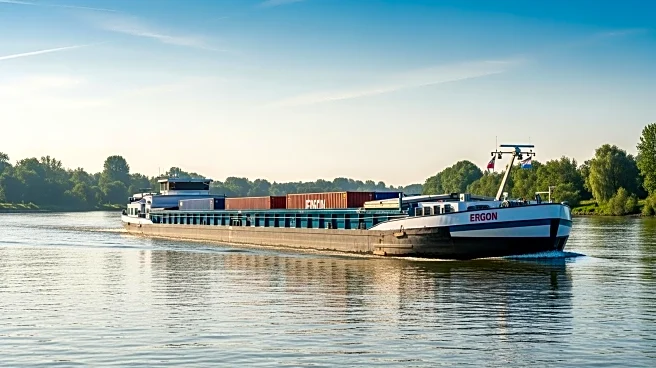What is the story about?
What's Happening?
Fashion and consumer goods brands are increasingly facing supply chain disruptions due to factors such as tariffs, inflation, labor shortages, and shifting trade policies. To address these challenges, brands are turning to digital transformation to build more resilient supply chains. This involves moving from reactive to proactive planning, focusing on agility, transparency, and flexibility. Key strategies include integrating systems for real-time visibility, using AI and analytics for smarter forecasting, and exploring nearshoring and regional production to reduce dependency on specific regions or suppliers.
Why It's Important?
The shift towards digital transformation in supply chains is crucial for fashion brands to navigate the complexities of global trade volatility. By enhancing agility and preparedness, brands can cushion the impact of disruptions, ensuring stability and continuity in operations. This approach not only helps in managing costs and lead times but also strengthens relationships with suppliers, fostering collaboration and long-term resilience. As brands adapt to these changes, they position themselves to lead through future uncertainties, potentially gaining a competitive edge in the industry.
What's Next?
Fashion brands are expected to continue investing in digital tools and infrastructure to enhance supply chain visibility and agility. This includes prioritizing system integration and data governance to ensure reliable data for AI-driven decision-making. Brands may also focus on strengthening supplier relationships by embedding data-sharing standards into agreements. As the industry evolves, companies that start small and scale their digital transformation efforts will likely be better equipped to handle future disruptions and lead the market.
Beyond the Headlines
The move towards digital transformation in supply chains reflects broader industry trends towards sustainability and ethical practices. By reducing dependency on distant suppliers and exploring regional production, brands can potentially lower their carbon footprint and support local economies. Additionally, the emphasis on collaboration and transparency aligns with consumer demands for ethical sourcing and production, enhancing brand reputation and consumer trust.
AI Generated Content
Do you find this article useful?













